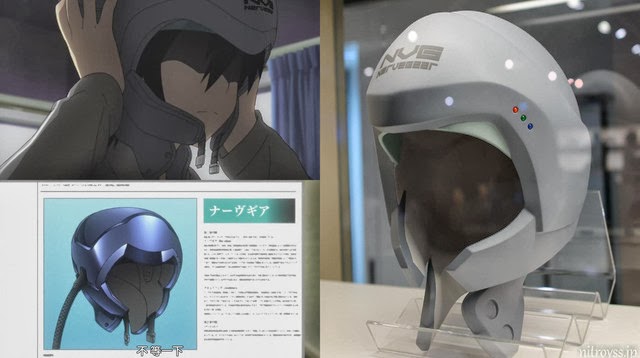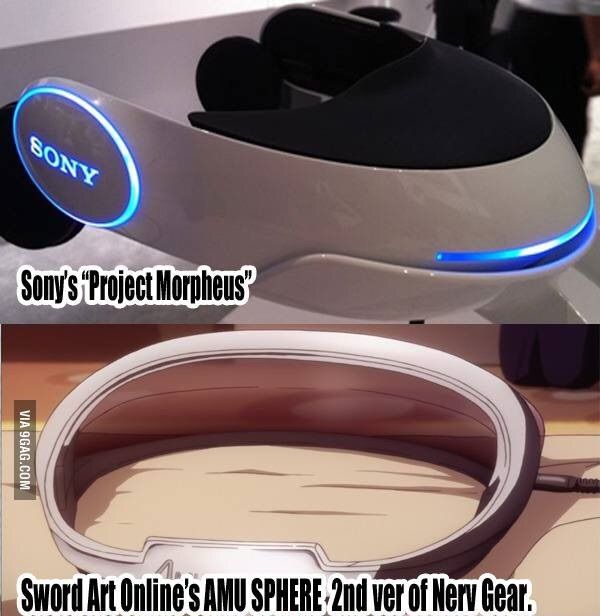For the last Device of the Week, I have selected Virtual Reality Headsets as my focus of discussion. Despite being highly well-known and widely used worldwide, it is actually more fascinating than the credits we give it for. A normal non-tech savvy user would see it as a game device that allows you to play a game in a more entertaining point of view.
VIRTUAL REALITY HEADSETS

That is not wrong, per say. However, what is truly more fascinating about this device is that it blurs our 5 senses, and forces us to plunge into a reality that is beyond our imagination. It creates a new world perspective for us, and gives us another life to live in BY concealing our actual senses and enforcing new senses upon us based on how the code is structured. Whether there is a dragon roaring and charging at you from your right, or a waterfall gushing endlessly on your left, we are now indulged in this false perception of reality, leaving behind our actual senses.

VR headsets are essentially head-mounted devices, acting like a sort of goggle or helmet, which provides the user a virtual reality experience. They are largely used with video games, but are often also used in other fields such as simulators and trainers. An example is UnderArmour’s VR Running Simulation in promotion of their Hover Series Sporting Shoes, as shown below.

VR Headsets comprise a stereoscopic head-mounted display which provides separate images for each eye (but the wearer will experience it as one view), stereo sound and head motion tracking sensors. This can include gyroscopes, accelerometers, magnetometers, eye-tracking sensors and structured light systems.
This means that when you are subconsciously looking through the corner of your eyes, it can even capture the same perspective for you as though you are looking at reality! When you are running physically, it can even mimic the movements, tremors and vibrations you are physically experiencing.

For a brief look at what a VR Headset comprises, we can take a look at the Oculus Rift VR Headset.

Adam Savage analyzing Oculus Rift:
PROS:
What makes the VR Headset so ideal is also partly its technology for comfort. The headset is secure, which provides comfort for the user, as well as portability and comfort. You can look up, down, left and right with ease and without fear of your goggles falling off. Secure the headset tight enough, and you can even do a back-flip with no worries. The Eyesight correction lenses are also a major thumbs up, as it helps you to balance the vision for both your eyes. Once done correctly, it prevents eye-strain.
The convenience factor is also boosted by how it is wire-free; there is no need to connect the headset to anything to operate it, as it operates via Bluetooth settings.
For various brands of VR Headsets, you can even use your own smartphone as the ‘screen’ for your headset. In other words, the device is not limited to just one headset, and are no longer mutually exclusive. Portability is further enhanced, and devices become more transferable.
I guess the most attractive thing about the headset is about how real it can get. The sensitivity of the eye-tracking software helps you immerse yourself further in the second life, and it provides a reprieve away from the harsh realities we face on a daily basis. In a sense, it is also a mental break for your mind and body, and can serve to recuperate.
At the same time, the headset can also be used for simulation purposes which saves time and resources. Each person can commit to their own training at their own time and pace, within their exclusive little world through their senses, confined in a headset.
CONS:
However, despite how amazing this initial-kick-starter project has become, it has its limitations and constraints as well.
Firstly, a lack of accurate calibration of eye correction from sudden eye movements and change in focus can lead to motion sickness, or virtual reality sickness. VR Headsets also have higher requirements for latency, which is the time it takes to change the input of the system to have a visual effect, as compared to ordinary video games. If the system lags or spikes, it will cause a lack of coordination experienced by the user’s 5 senses, which can also cause the said motion sickness.
The Graphics Processing Unit (GPU) also needs to be very powerful to render the required amount of frames needed to run the VR simulation smoothly and in imitation of real life timing and precision. This can take a toll on battery life; it is 2.5 hours to 3 hours, opposed to normal video games on normal consoles at 4-8 hours per charge.
Lastly, completely immersing yourself in the device will disallow you to spend time with your family and friends offline. Traditional video games allow other people to watch you play and you can then have fun talking, laughing and discussing the game as you play along. However, playing through the VR headset takes away that bonding experience in exchange for the immersive experience in the game world.
Suggestion for alternate use of the Device and/or modification that would generate a new application, a new artwork, a new design, etc. for the Device:
The VR Headset has been used for many purposes, such as military training, medical training and sports simulation on top of video gaming. More and more tech companies are coming up with different series of VR Headsets, and it is getting increasingly advanced and tech-savvy. I don’t think it’s a bad thing, in fact I think that it is quite amazing how companies are churning out these futuristic inventions.
However, I think that there is a fine line between these headsets aiding our life functions and learning, and whether we are over-relying on this technology. Simply said, if we do not end up like the chubby lazy people in Wall-E, then we will be fine.

An improvement, or rather, a futuristic idea for the design of the VR headset, in my opinion, is something that has actually been created.

That’s right; it’s the anime Sword Art Online’s VR Headset; NerveGear and AmuSphere. The anime came out at around the same time as the announcement of the first Oculus Rift VR Headset, which makes it understandable that the concept in the anime still utilizes wiring into the wall (probably for charging purposes).

NerveGear

AmuSphere
The story of the anime is mainstream; boy goes into MMORPG world, gets stuck there with everyone else because of someone’s weird fantasy fetish to create a virtual world where they are God, boy gets powerful, boy fights a lot, boy meets girl, they fall in love, they make more babies, ignore that last part it didn’t happen…

Ok that’s not the point. The reason why I brought up SAO’s NerveGear/AmuSphere is because the concept behind it is a much more powerful sensory device for the user. It supposedly recreates even your sense of smell and pain based on an adjustable setting in the game up to a player’s personal preferences, and it also allows players to customize their voice and appearance in the game.
Such personalized details might seem trivial to game or simulation developers, but it goes a long way in creating an even more immersive experience for the user. Furthermore, it would be an amazing sight to behold when lenses and systems can finally recreate a “second skin” for the player, where the player can truly feel that they are in the second life and not just playing the role of a pre-made avatar. If future VR Headsets can take this virtual reality to the next level, I am sure everything will become even more interesting. I would probably quit school and work full time through the headset.

